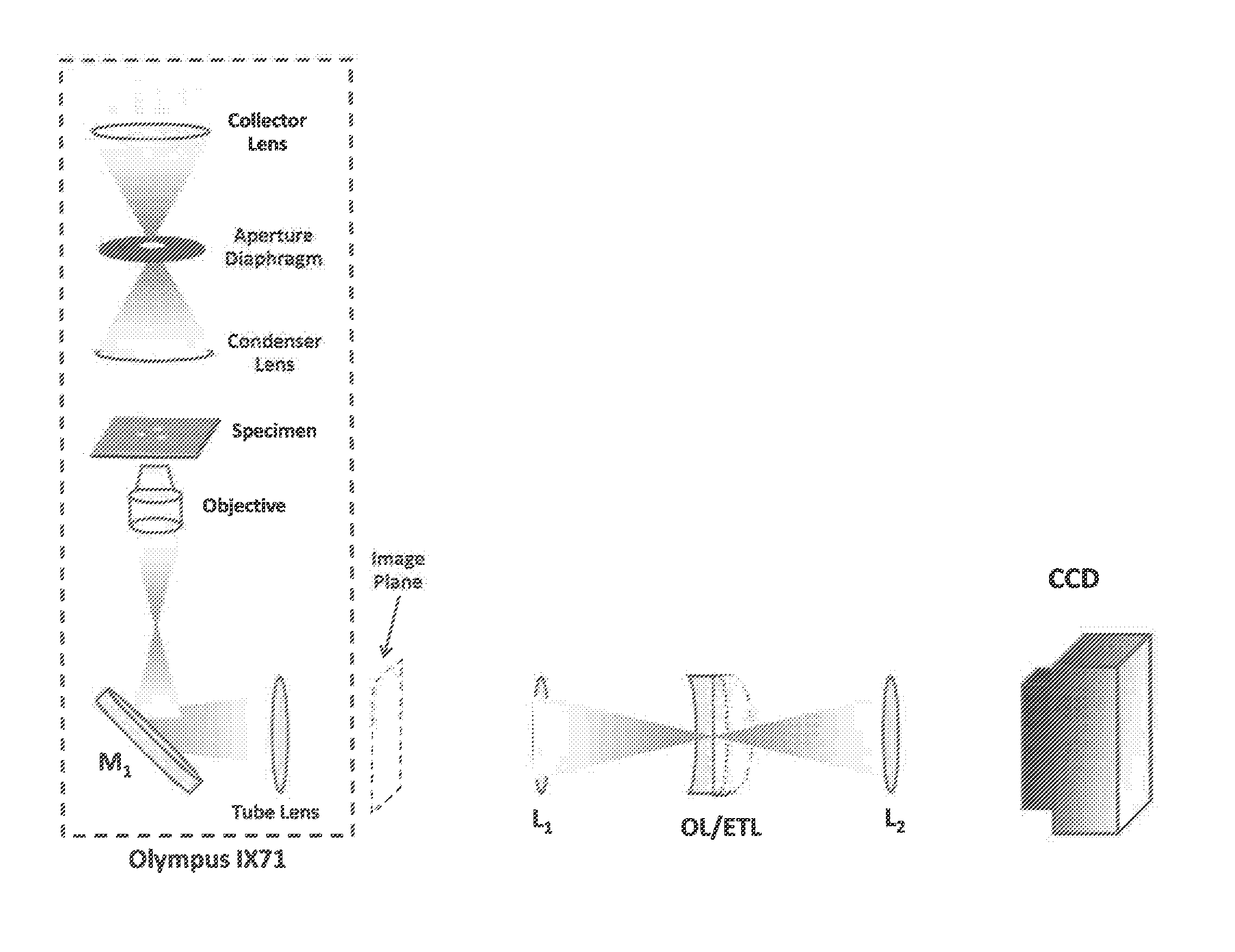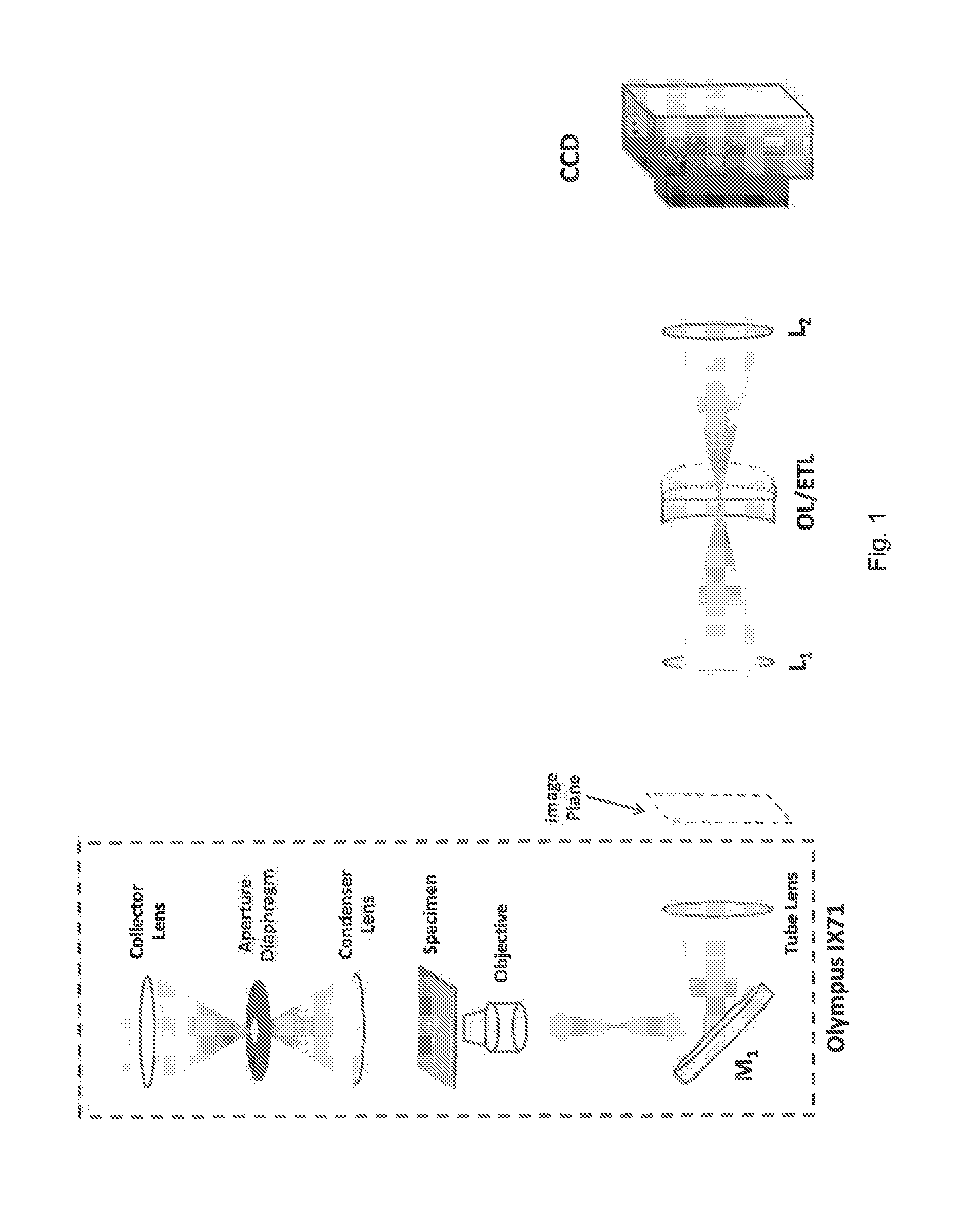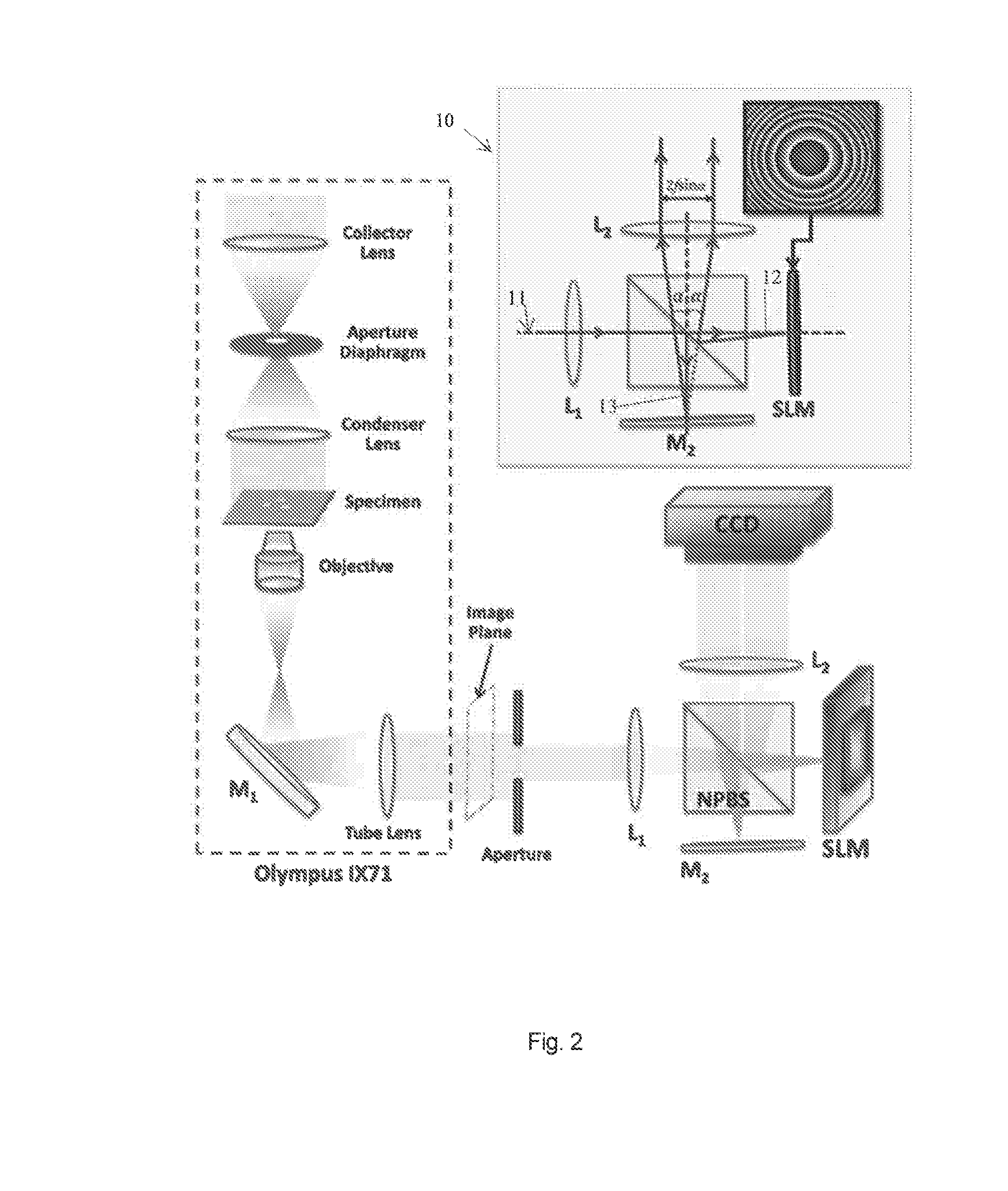Methods and systems for transport-of-intensity imaging
- Summary
- Abstract
- Description
- Claims
- Application Information
AI Technical Summary
Benefits of technology
Problems solved by technology
Method used
Image
Examples
first embodiment
1. First Embodiment
[0030]The first embodiment is a TIE system which employs a tunable lens (TL) for achieving high speed transport of intensity imaging. The setup is shown schematically in FIG. 1. The embodiment is obtained by adding a novel image relay system to the camera port of a conventional microscope. In the example below this is a commercial inverted microscope used in the transmission mode, but note that the principle would work for other microscopes, and can be used independently of whether the microscope is operated in the transmission or reflection mode.
[0031]At the left FIG. 1 is the conventional inverted bright field microscope system, designated Olympus IX71, which comprises a collector lens, a condenser aperture diaphragm, a condenser lens, an objective, a reflective mirror (M1), and a tube lens. An specimen to be imaged is located on a support between the condenser lens and objective. The microscope produces a magnified image of the specimen at the camera output por...
second embodiment
2. Second Embodiment
[0048]The second schematic setup for achieving single-shot transport of intensity imaging is shown in FIG. 2, including an inset portion 10 which explains the operation of the system. It also employs a commercial inverted microscope (again referred to as an Olympus IX71) with an additional 4f image relay system. All the requirements and specifications of the microscope and the 4f system are same as mentioned above for the first embodiment.
[0049]In contrast to the first embodiment, a non-polarizing cube beam splitter (NPBS) splits the image beam11 into two beams 12, 13. A spatial light modulator (SLM) (located at the Fourier plane) reflects one of these beams (in particular, beam 12) and the second beam 13 is reflected from a plane mirror (M2) located at the Fourier plane. Theoretically, the total distance travelled by the light between the two lenses L1 and L2 is equal to 2f irrespective of which beam 12 or 13 is considered.
[0050]However, in practice, depending o...
PUM
 Login to View More
Login to View More Abstract
Description
Claims
Application Information
 Login to View More
Login to View More - R&D
- Intellectual Property
- Life Sciences
- Materials
- Tech Scout
- Unparalleled Data Quality
- Higher Quality Content
- 60% Fewer Hallucinations
Browse by: Latest US Patents, China's latest patents, Technical Efficacy Thesaurus, Application Domain, Technology Topic, Popular Technical Reports.
© 2025 PatSnap. All rights reserved.Legal|Privacy policy|Modern Slavery Act Transparency Statement|Sitemap|About US| Contact US: help@patsnap.com



